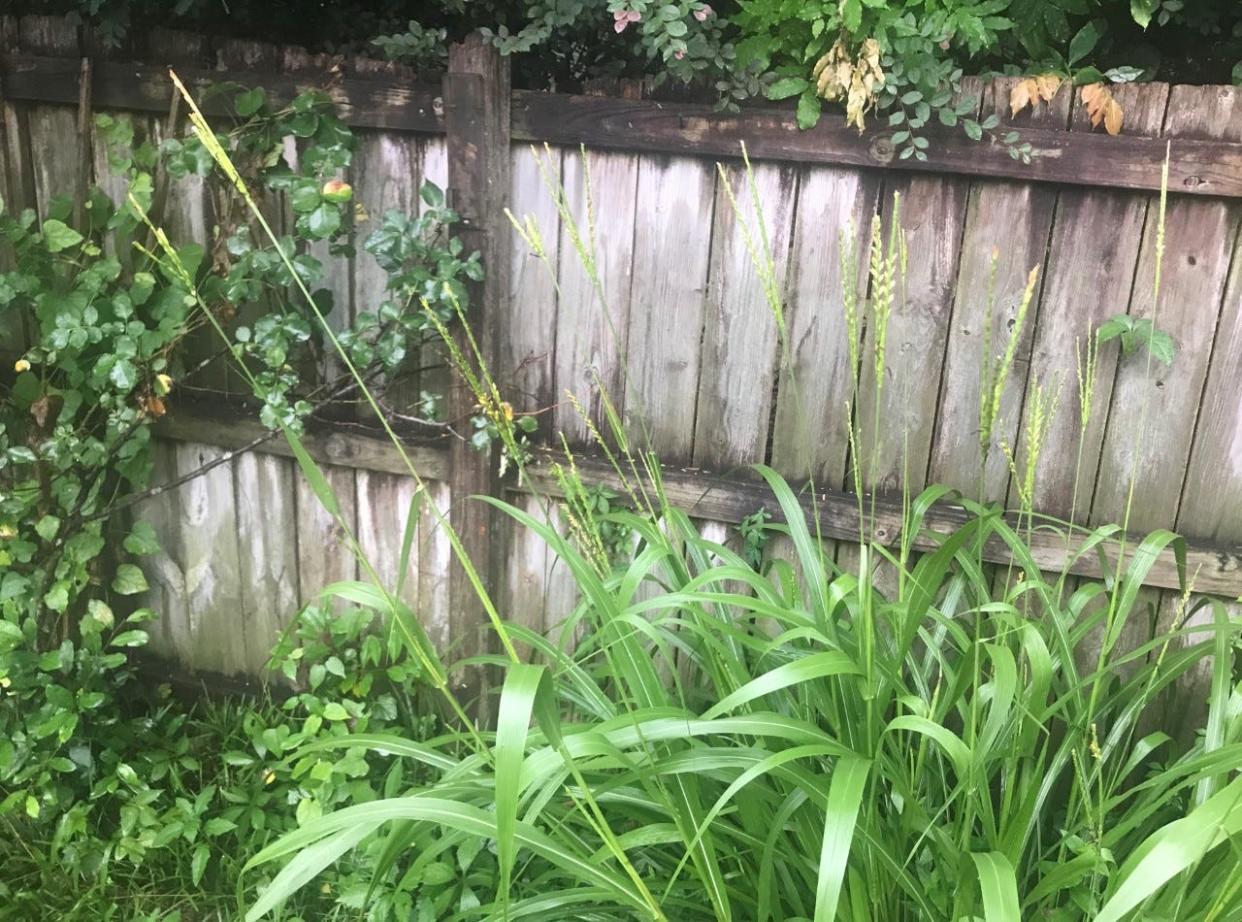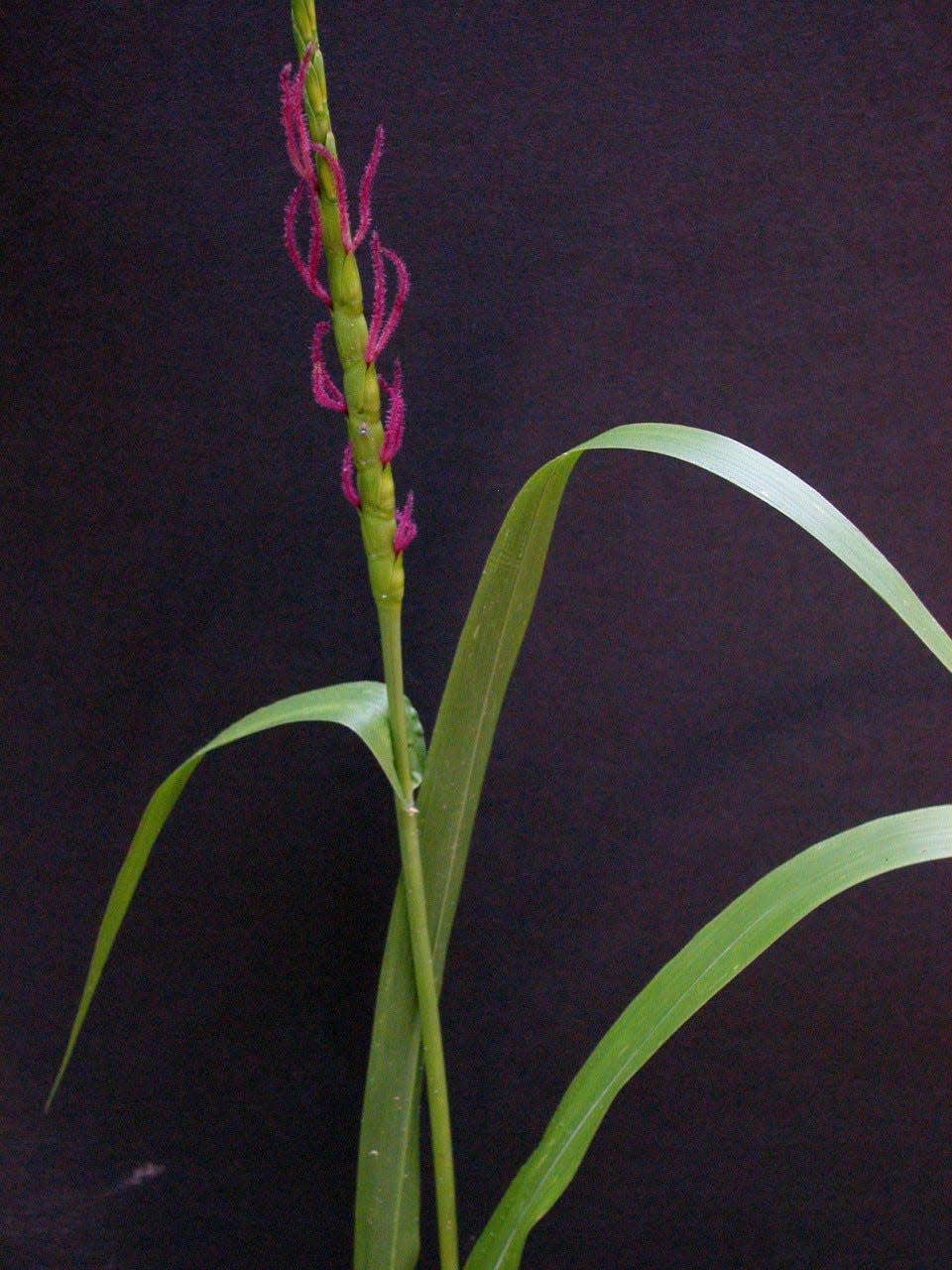Tall, dark green and handsome grass is related to corn| Mystery Plant

"I'm as corny as Kansas in August ..." — Nellie Forbush in "South Pacific," lyrics by Oscar Hammerstein
Well, it's not August yet, and this plant is not exactly corn. But it's close.
Gama-grass or turkey-foot grass (Tripsacum dactyloides) is a grass that you can see basically anywhere in the eastern United States, from Florida and Texas well into the upper Midwest, southern New England and way down into South America.
It's actually rather distinctive, I think, even as you are driving along the highway (pay attention to the speed limit, please). The plants come up in big clumps, from rhizomes. The stems this time of year are tall and arching, often leaning over, sometimes up to nearly 9 feet tall. The leaves are dark green, and like many grass species, a bit scratchy. At this time of year, the plants are blooming, in their grass-like way.
Spread the news: Fern-like ground cover's ancient lineage traced to Africa | Mystery Plant
Home & Garden: Make birds happy by planting a black cherry tree in your yard | Legare
All of the flowers produced by this plant are either male or staminate flowers (producing pollen) or female or pistillate flowers (producing ovules, from whence come the seeds, eventually). The flowers are always separated, but both can be found on the same individual (we botanists say that such plants are "monoecious").
In the case of our Mystery Plant, the stems will develop one to three terminal, stout spikes. Each spike will have pistillate flowers down below, and then a series of staminate flowers above them.
If you look at these things closely, you will notice that all the flowers, whether pistillate or staminate, are deeply embedded within the tissue of the spike itself. The female flowers exhibit purplish or whitish, feathery stigmas to receive the pollen. Staminate flowers have their prominent orange anthers hanging out, connected by delicate, threadlike filaments.
After shedding their pollen, the staminate flowers dry up and get sort of scrunchy, and eventually fall off the spike. The pistillate flowers down below end up in a strung-out, bead-like arrangement, and they, too, during the autumn, will eventually all fall away from each other. Each pistillate flower is capable of producing a single grain. The fruiting grain, once falling away from the spike, is a bit odd, looking like a hard little kernel of corn, and a bit trash-can shaped.

This plant is in fact related to what Americans generally know as "corn," that stuff that grows in the fields, which produces thick "ears" (specialized spikes of female flowers) as well as tassels above (where the pollen comes from). Genetically, it is similar to cultivated corn, and there is considerable evidence that it hybridized with a different Mexican species, long ago, to form the plant that we now call corn, or Zea mays.
Of course, our friends in Britain like to use the word "maize" for what we call "corn." Indeed, the English word "corn" has been used for a very long time, and in Britain, often refers to just about any kind of grass crop that produces grains.
This really is a handsome grass, its turkey-foot spikes sticking way up in the air. It's fun to grow in your garden, too, although it can be a bit weedy, even though it's a native.

John Nelson is the retired curator of the A.C. Moore Herbarium at the University of South Carolina in Columbia, S.C. As a public service, the Herbarium offers free plant identifications. For more information, visit www.herbarium.org or email johnbnelson@sc.rr.com.
This article originally appeared on Tallahassee Democrat: Mystery Plant: Gama-grass, turkey-foot grass, a close relative of corn

